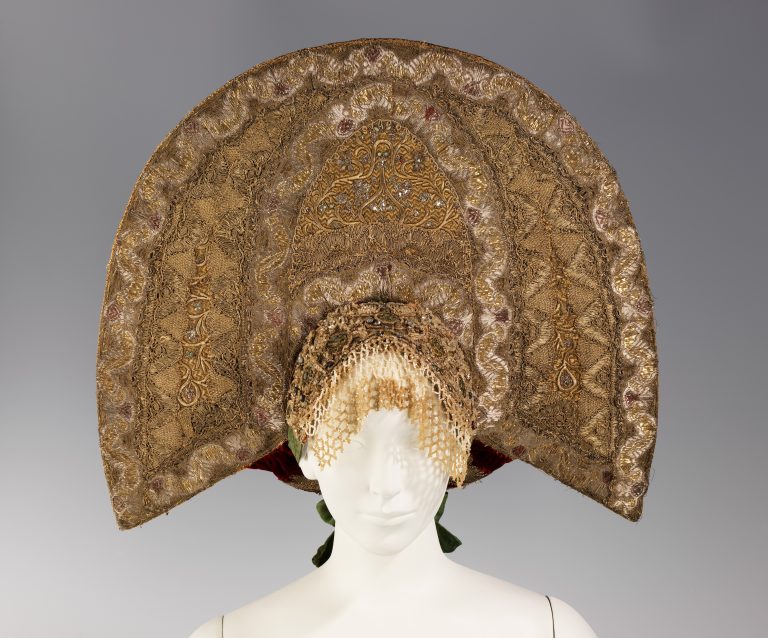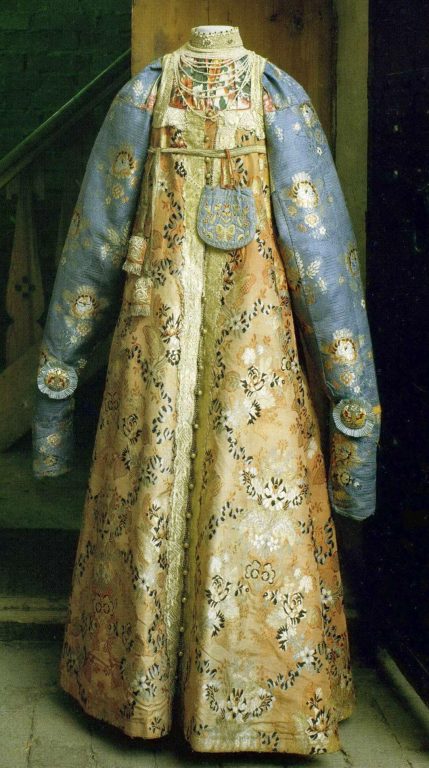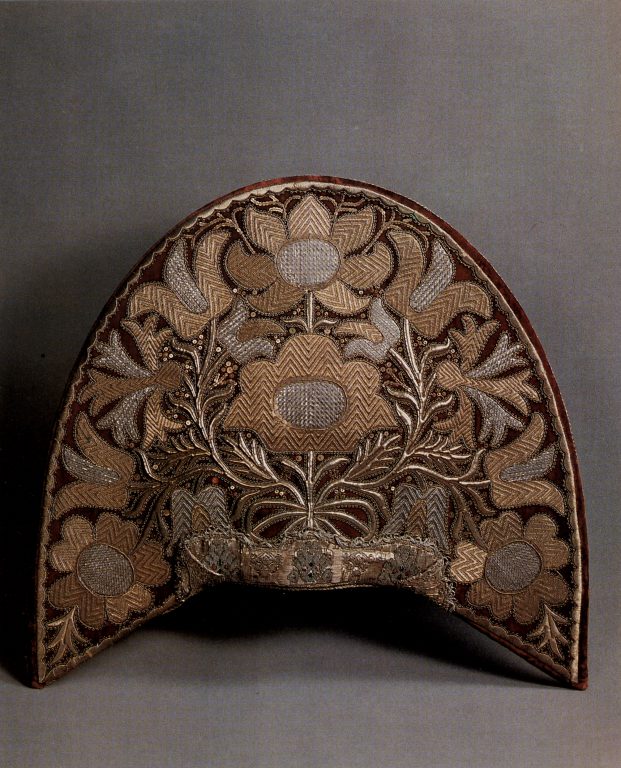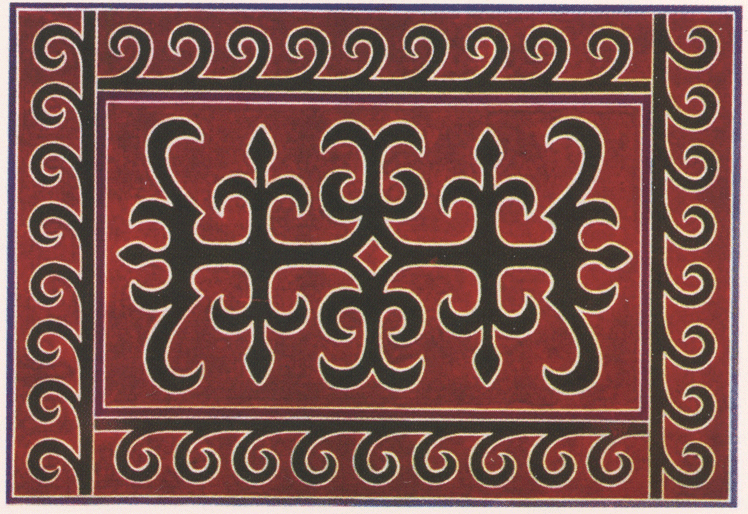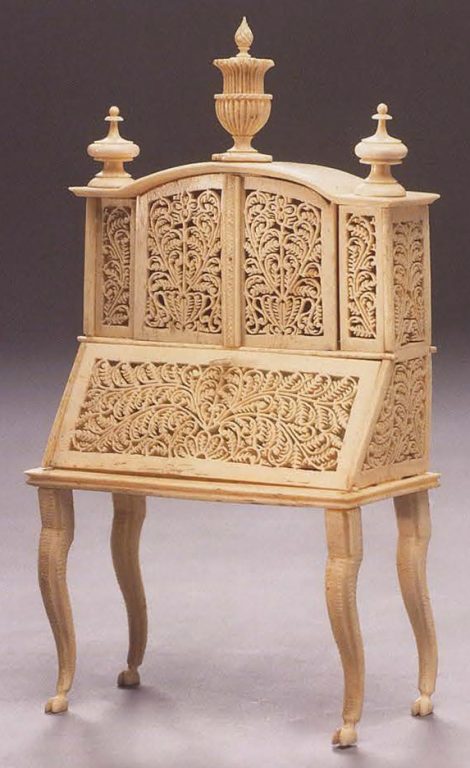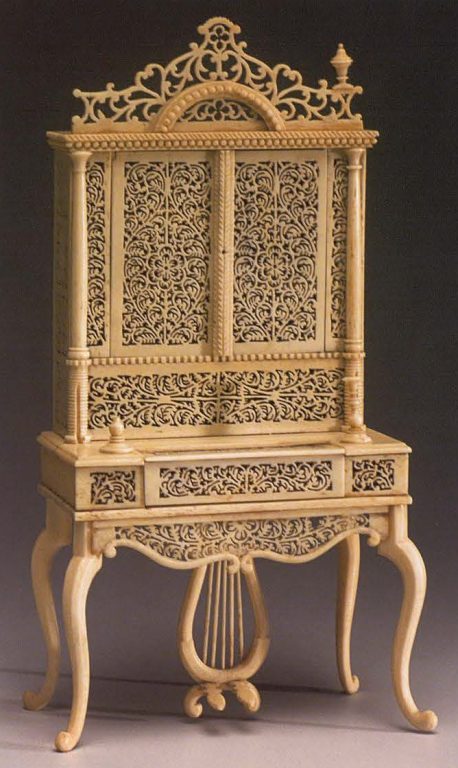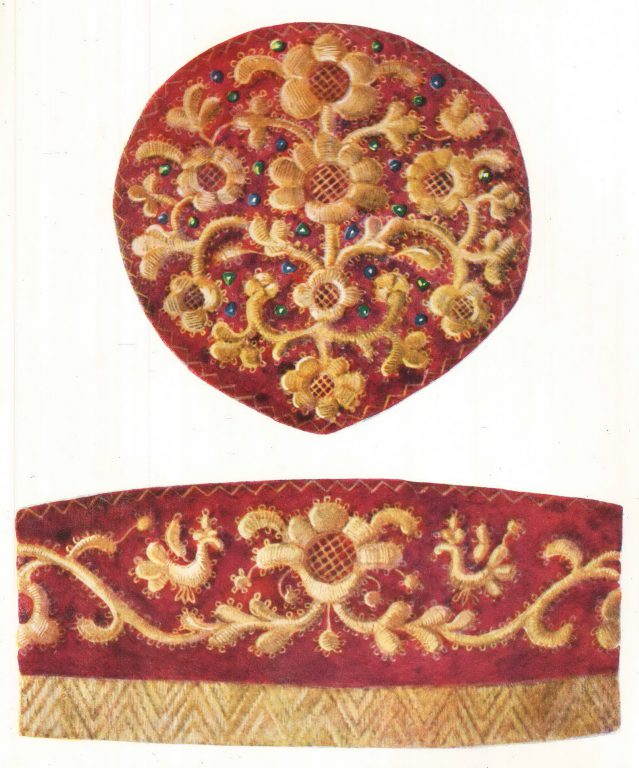

-
Composition
-
Elements
-
Type of sourceDatabase “Metropolitan Museum of Art”
-
Fund that the source refers toMetropolitan Museum of Art
-
This object is from the collection of Natalia de Shabelsky (1841-1905), a Russian noblewoman compelled to preserve what she perceived as the vanishing folk art traditions of her native country. Traveling extensively throughout Great Russia, she collected many fine examples of textile art of the wealthy peasant class. From the 1870s until moving to France in 1902, Shabelsky amassed a large collection of intricately embroidered hand-woven household textiles and opulent festival garments with rich decoration and elaborate motifs. The Brooklyn Museum holdings include many fine examples including the majority of the garments. Portions of Shabelsky’s collection are also housed at the Museum of Fine Arts, Boston, the Cleveland Art Museum, and the Russian Museum of Ethnography in St. Petersburg.
Headdresses, or kokoshniks had the greatest abundance of ornamentation of any type of garment in Russia. They were most often made of damask woven with gilt metallic threads or velvet with gold embroidery. The wealthy peasant class often decorated their kokoshniks with pearls and gemstones. The headdresses worn by maidens exposed their hair, considered a prize possession in Russian culture. They were often accompanied by a venchik, a forehead covering made of fabric or metal. Married women were required to cover their hair entirely lest they be considered immodest. The double-headed imperial eagle is common to many cultures throughout history, most notably Byzantium. The dual heads were meant represent the secular and religious sovereignty of the monarch, as well as power over the East and West. This headdress is spectacular both in size and rendering. The dense decoration as well as the Russian heraldic symbol creates a sense of grandeur and importance.


